Bachmann Industries
1400 E. Erie Ave
Philadelphia PA 19124
Price: $1,250
Website: www.bachmanntrains.com
Plastic and die-cast metal, steam outline, 1870s-era Baldwin 8-18 D class Mogul; all-metal gears; “plug-and-play” socket in tender for the addition of R/C or DCC control; authentic paint scheme. Dimensions: length, 26 1/2″; width, 4 1/2″; height, 7 3/8″. In 1:20.3 scale, this works out to 44’10” x 7’7 3/8″ x 12’6 3/4″, respectively
This locomotive is Bachmann’s second version of this popular prototype; the first was introduced in 2001. While the two versions may look similar, there’s much more that’s different about them. The main physical components are the same—cab, domes, boiler, and drivers. The tender appears the same, too. In the 15 years that have elapsed between the two, Bachmann has figured out better ways of doing a lot of things. Those not-necessarily visible changes make a difference in how these models run and how much easier it is for modelers to adapt them to today’s forms of sound and control.
Let’s look at the obvious—the paint and detailing. It’s gorgeous! Bachmann offers four versions of this revised model, and the paint and details on each are specific to the prototypes represented. Bachmann sent the Eureka & Palisades version for review, though I had the chance to see all four versions at the National Narrow Gauge Convention last August. They are all beautiful, and credit must be given to Bachmann for achieving a much closer paint equivalent to a Russia-iron boiler jacket than the light blue featured on the first-generation models.
Each paint scheme offered by Bachmann is true to prototype, based on research by large-scale modeler David Fletcher. Coincidentally, a recent issue of Narrow Gauge & Shortline Gazette has one of David Fletcher’s drawings of a Eureka & Palisades Mogul in the same paint scheme. Bachmann did a faithful job of replicating the colors and linework. The fourth version, “Grizzly Flats,” is based on a locomotive owned by the late Disney animator Ward Kimball, complete with accurately-recreated portraits on the sides of the headlight and the rear of the cab. I would note that the “Glenbrook” version of this locomotive, true to prototype, does not have a railroad name on the side of the tender, leaving modelers space to put in their own railroad name, should they desire. I almost wish Bachmann would have also released a “basic black” version of this locomotive for those who might want to kitbash it. It seems a crime to cover the factory paint.
In addition to the paint are added details specific to the particular prototype being modeled. For instance, the E&P version sent for review has a crosshead water pump on one side. Other versions may or may not have this detail, depending on the prototype. Three of the four locomotives do not have brake detail, as the locomotives were delivered without engine brakes (called “running barefoot”). Engines were slowed by opening their cylinder cocks and putting them into reverse gear, thus using steam pressure working against the pistons to slow the locomotive. (Opening the cylinder cocks was crucial, as you would blow out the cylinder ends otherwise.) Two of the locomotives are supplied as wood burners, two as coal burners. Whoever designed the removable wood load got a bit overzealous, as it covers the water hatch—something to which crews would need access.
There are two different styles of pilot as well. The E&P version sent for review has a pilot made of horizontal angle bars. Other versions have more traditional vertical wood supports. Take care not to bump into anything, though, as the supports holding the pilot in place are a little fragile. I was a little disappointed to see the running boards still with a modern diamond safety-tread pattern on them, held over from the first generation. Prototype running boards of that era would have been wood. This is nothing a little sandpaper can’t fix but, with the work Bachmann did on the rest of the locomotive, this could easily have been tweaked in the process.
That pretty much summarizes the visible differences between old and new. Much more has changed internally. First, Bachmann redesigned the drive system on this locomotive, with all new brass gearing that should be immune to the breakage problem that plagued the early versions. The driver suspension has been redesigned as well. The center (blind) drivers are designed with stops to keep them from dropping below the rails as the locomotive goes around tight curves. (This replaces an arrangement of pins that moved the middle driver from side to side on the previous version.) Electrical pick-up on the tender has been redone so that the pick-ups are on the axle ends, which produce less drag than the old wipers-on-the-wheels arrangement. The locomotive features a smoke unit, and flicker lights in the firebox, though the door must be open to see them, unchanged from the previous version.
Internal electricals of the locomotive have been redone as well. The engine now comes with Bachmann’s “plug-and-play” socket in the tender, conveniently located under the removable wood or coal load. This makes adding third-party sound and control products simple. There’s a “rain gutter” around the opening to help keep water out of the electronics. A speaker in the floor of the tender provides sound.
As equipped, the locomotive comes with a dummy plug inserted in the plug-and-play socket. This allows the locomotive to run on analog track power. There are also switches in the tender to turn the motor on or off, switch the polarity of the track power from the “large scale” standard to the “NMRA” standard (effectively reversing the polarity of power to the motor), and a switch to select track power or battery power going to the plug-and-play socket. This has been standard in Bachmann locomotives for a while now. The locomotive also features optical chuff triggers located in the cylinders. These can be adjusted by the modeler to create a chuff that’s more or less “square,” depending on the taste of the user. (An “out of square” locomotive had irregular exhaust beats, and was not as efficient as one that was in square.)
How does it fare when the electrons are applied? The LED headlight (a pleasing warm white) comes on just before the loco begins to move and, when it does start to move, the engine is smooth and quiet. Starting voltage is actually a little high on this engine, with the wheels not beginning to turn until around four volts. This is so the internal electronics (lights and chuff sensors) are powered up and functioning before the locomotive begins to move. When it does start, it draws about half an amp. With the wheels slipping, the motor draws 1.9 amps and, stalled, it draws between 3 and 4 amps, depending on the voltage. Maximum speed at 13 volts is a sedate 20 scale mph, which increases to 30 scale mph at 20 volts. Drawbar pull comes in at 20 ounces, or enough to pull around 16 average freight cars on straight, level track.
The instructions specify a minimum radius of 2.5′ (5′ diameter). The engine will do this, but it’s not the most aesthetically pleasing thing to watch. If you’re running this with 1:20.3 freight or passenger equipment, they tend to have a minimum radius of 4′ (8′ diameter) anyway.
Since I had a spare DCC decoder on hand, I decided to see how “plug-and-play” the locomotive was. The decoder I had (a QSI “Titan”) wasn’t the version that could plug into the socket, but Bachmann provides an interface board that will plug into the socket, which has a lot of short wires sticking out of it, allowing you to wire in any generic decoder. The wires are labeled, so it’s easy to figure out which wire goes to what for power, motor, headlight, speaker, and so forth. After hooking everything up, I plugged it in and off it went, as expected. I had to program the decoder to use the chuff trigger but, once I did that, the decoder accepted the optical chuff input without issue.
In terms of converting to battery power, the only issue would be finding a place in the tender to put the battery. There’s room under the wood load (with a little bit of light trimming) to fit a Li-ion pack. If you have a locomotive with a coal load, you may have to get creative. There’s an open space in the rear of the tender but a typical Li-ion pack may not fit.
It was the original Bachmann Mogul that prompted me to settle on modeling 1:20.3. There was just something about it that impressed me, despite it being prototypically a small locomotive. This new version has the same visual impact, amplified by the prototypically accurate paint. This engine brings you back to an age where steam locomotives were viewed with reverence. When it’s on the railroad, it’s bound to attract attention. When it’s on the shelf, it will do the same.





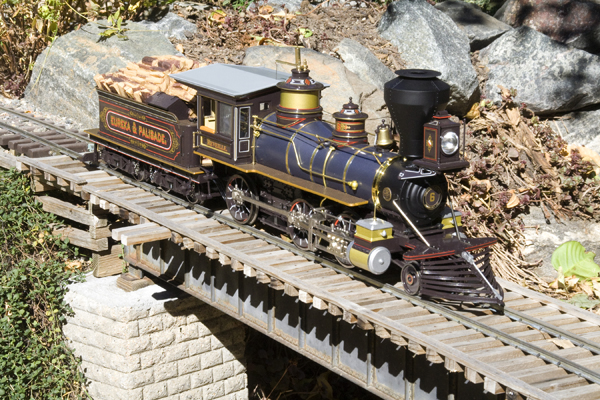
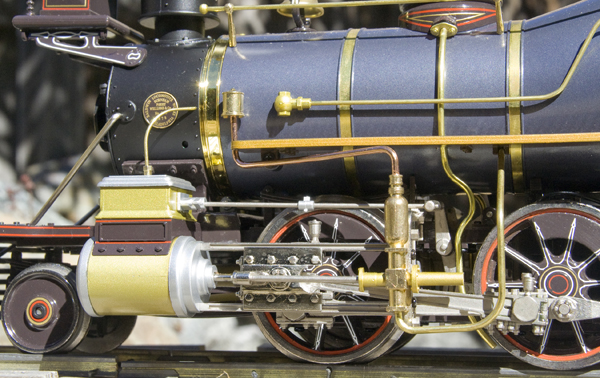
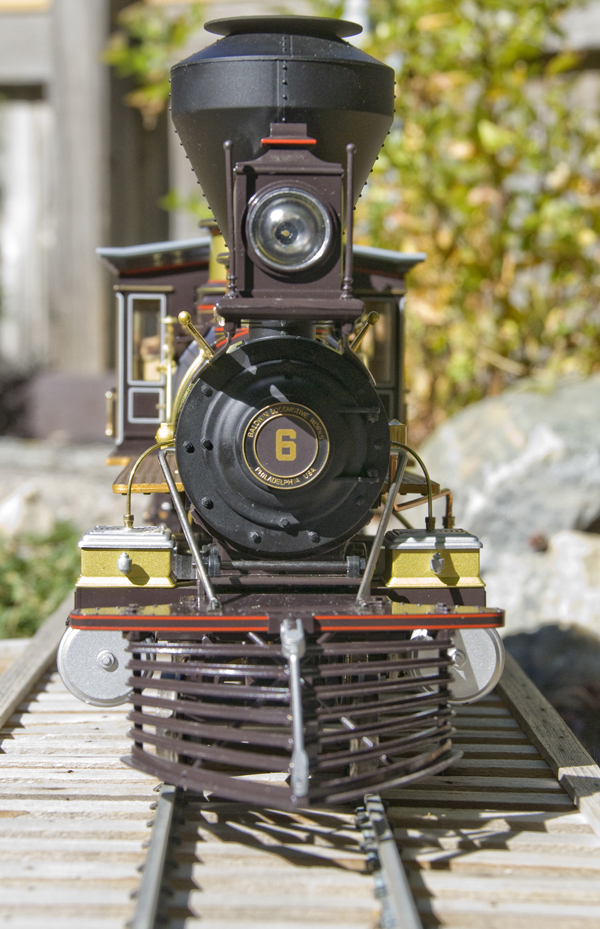
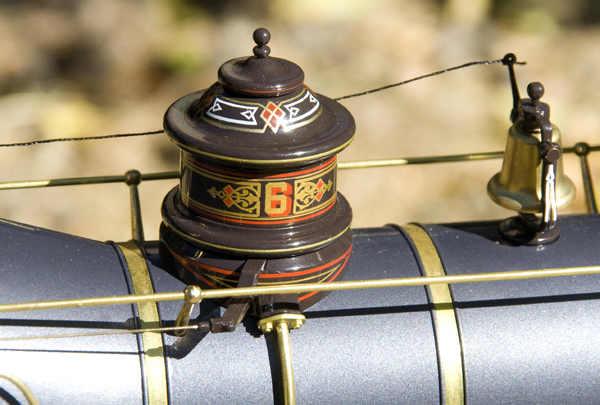

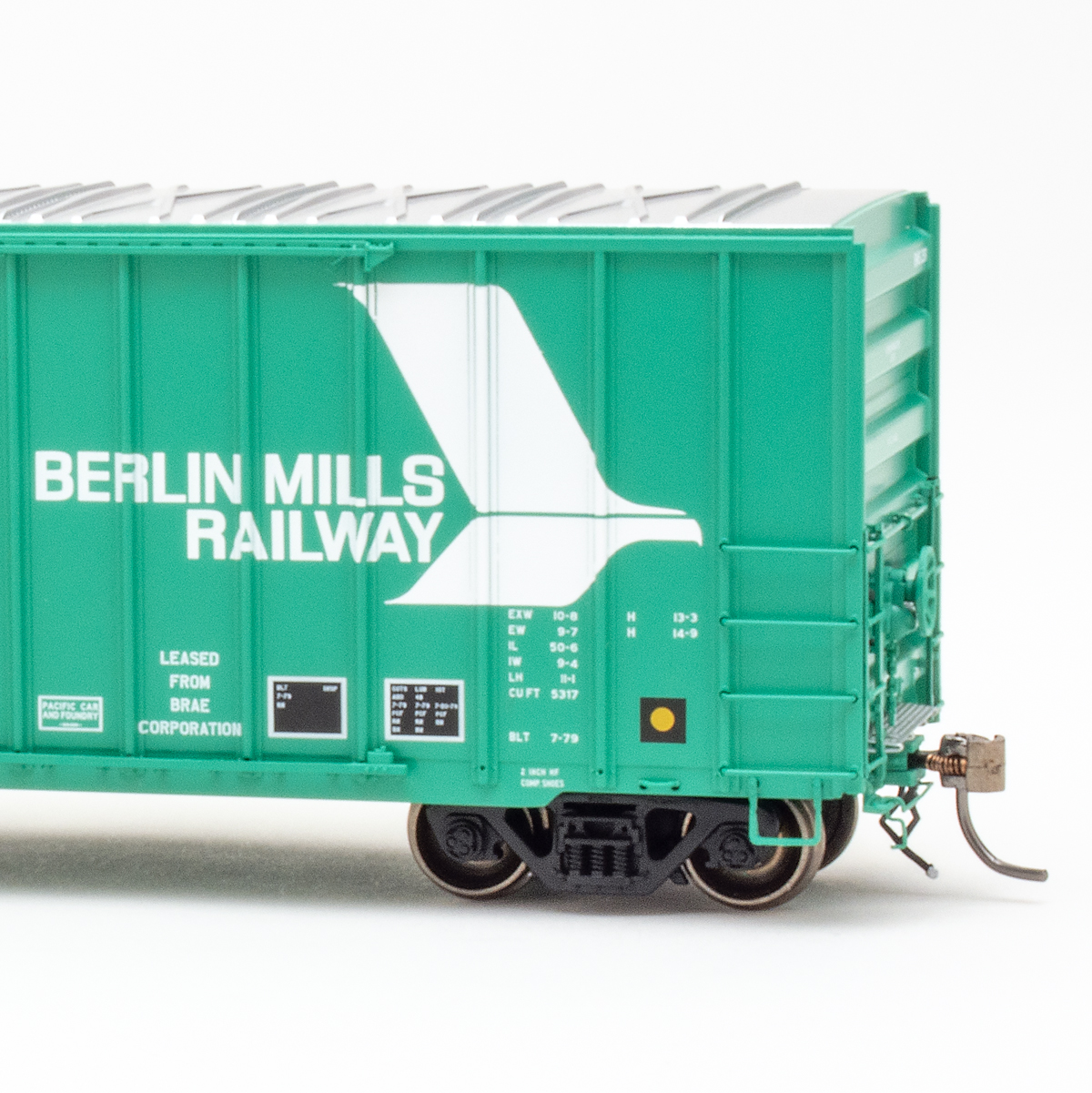
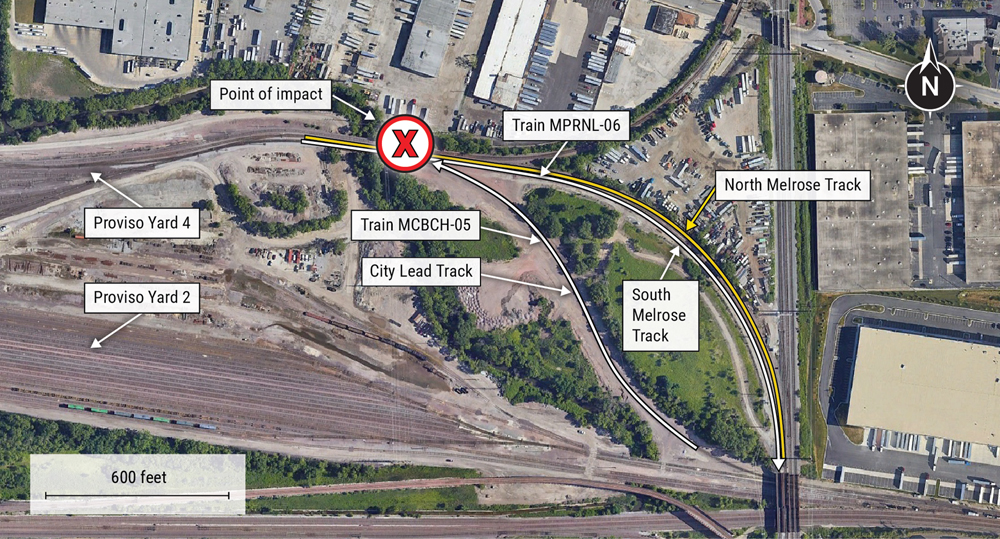
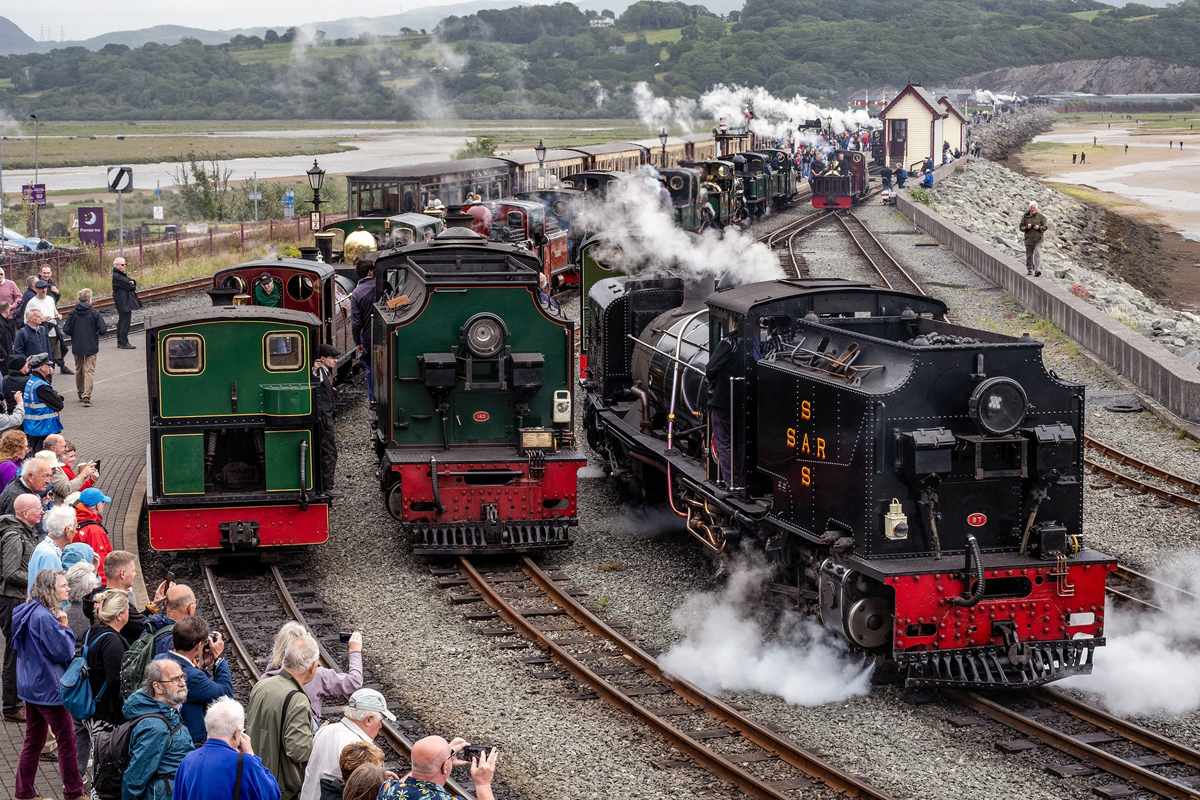





Great review. Bachmann has really improved the Spectrum line of engines with RC/DCC P&P and the beefier brass gears. Detail is unsurpassed and prototypically the engines are pretty darn close. Great machine.